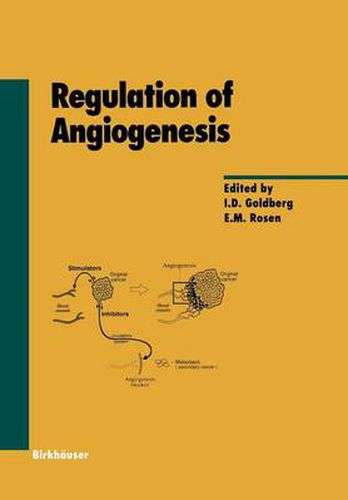Readings Newsletter
Become a Readings Member to make your shopping experience even easier.
Sign in or sign up for free!
You’re not far away from qualifying for FREE standard shipping within Australia
You’ve qualified for FREE standard shipping within Australia
The cart is loading…






This title is printed to order. This book may have been self-published. If so, we cannot guarantee the quality of the content. In the main most books will have gone through the editing process however some may not. We therefore suggest that you be aware of this before ordering this book. If in doubt check either the author or publisher’s details as we are unable to accept any returns unless they are faulty. Please contact us if you have any questions.
thrombospondin-l may be encoded by a tumor suppressor gene. Dr. O'Reilly discusses angiostatin, an exciting recently discovered factor derived from the fibrinolytic proenzyme plasminogen that inhibits tumor angiogenesis, primary tumor growth, and formation of metastases. In addition to the soluble class of angiogenesis-regulatory factors discussed above, interactions of endothelial cells with components of the extracellular matrix and with other cell types are critical for proper formation of vessels. Drs. Grant and Kleinman discuss the role of laminin and other matrix molecules in regulation of capillary formation. Dr. van Hinsbergh and colleagues describe the role of fibrin and the fibrinolytic system in angiogenesis associated with wound repair. Cell surface mole- cules that interact with the extracellular matrix have been implicated in the regulation of angiogenesis. Dr. Varner discusses some exciting new studies on the roles of specific vascular cell integrins (a /33 and a /3s) in mediating v v tumor angiogenesis and angiogenesis associated with wound healing. The pericyte, a vascular smooth muscle-like cell, exerts a powerful regulatory effect during the later stages of angiogenesis in which mature capillaries are formed. These mechanisms are discussed by Drs. Hirschi and D’ Amore. With all the recent progress in the molecular biology of angiogenesis, the contribution of microenvironmental conditions such as hypoxia and pH to angiogenesis is often ignored. Drs. Rockwell and Knisely review this area of investigation and present studies of experimental tumor models.
$9.00 standard shipping within Australia
FREE standard shipping within Australia for orders over $100.00
Express & International shipping calculated at checkout
This title is printed to order. This book may have been self-published. If so, we cannot guarantee the quality of the content. In the main most books will have gone through the editing process however some may not. We therefore suggest that you be aware of this before ordering this book. If in doubt check either the author or publisher’s details as we are unable to accept any returns unless they are faulty. Please contact us if you have any questions.
thrombospondin-l may be encoded by a tumor suppressor gene. Dr. O'Reilly discusses angiostatin, an exciting recently discovered factor derived from the fibrinolytic proenzyme plasminogen that inhibits tumor angiogenesis, primary tumor growth, and formation of metastases. In addition to the soluble class of angiogenesis-regulatory factors discussed above, interactions of endothelial cells with components of the extracellular matrix and with other cell types are critical for proper formation of vessels. Drs. Grant and Kleinman discuss the role of laminin and other matrix molecules in regulation of capillary formation. Dr. van Hinsbergh and colleagues describe the role of fibrin and the fibrinolytic system in angiogenesis associated with wound repair. Cell surface mole- cules that interact with the extracellular matrix have been implicated in the regulation of angiogenesis. Dr. Varner discusses some exciting new studies on the roles of specific vascular cell integrins (a /33 and a /3s) in mediating v v tumor angiogenesis and angiogenesis associated with wound healing. The pericyte, a vascular smooth muscle-like cell, exerts a powerful regulatory effect during the later stages of angiogenesis in which mature capillaries are formed. These mechanisms are discussed by Drs. Hirschi and D’ Amore. With all the recent progress in the molecular biology of angiogenesis, the contribution of microenvironmental conditions such as hypoxia and pH to angiogenesis is often ignored. Drs. Rockwell and Knisely review this area of investigation and present studies of experimental tumor models.